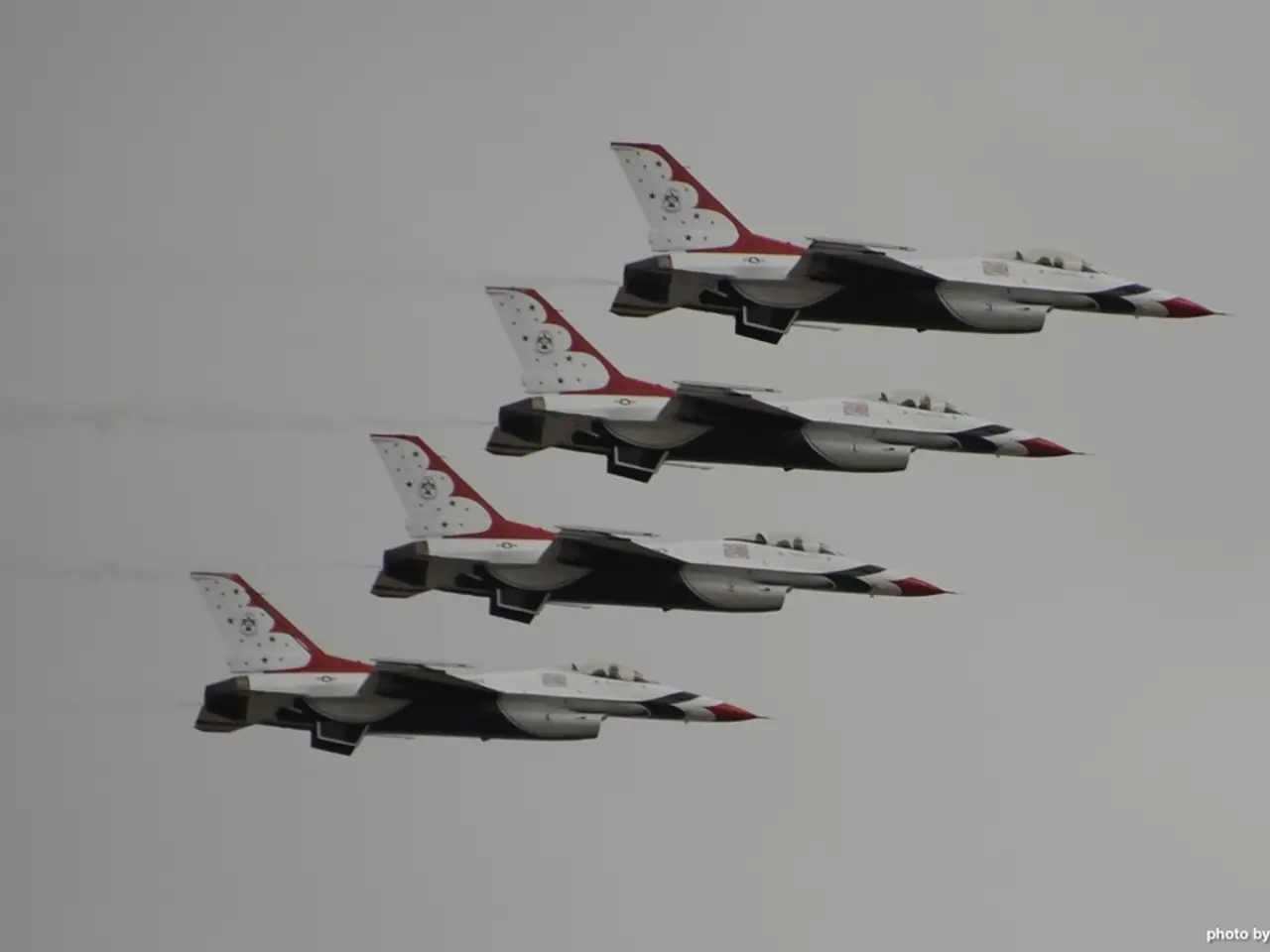Russian aircraft, including bombers and fighter jets, were intercepted by NORAD in the vicinity of Alaska.
In the past few years, Russian Tu-95 bombers have been conducting missions in the Alaskan Air Defense Identification Zone (ADIZ), a designated area of international airspace just outside U.S. sovereign airspace. These flights, which have been a regular occurrence since 2007, have been monitored and intercepted by NORAD, the joint U.S.-Canadian aerospace defense command.
The encounters with Russian aircraft in the Alaskan ADIZ are not seen as a threat by NORAD, given their routine nature. Missions often involve strategic bombers such as the nuclear-capable Tu-95 Bear variants, accompanied by fighter escorts like the Su-35 Flanker jets. These long-range flights usually involve surveillance or signaling operations near U.S. airspace.
On July 22, 2025, for instance, two Tu-95 bombers and two Su-35 fighters operated in the Alaskan ADIZ for about 3 hours and 15 minutes before being intercepted by U.S. Air Force fighters including F-35s and F-16s. Another similar incident occurred in April 2025, as confirmed by NORAD.
During these encounters, U.S. and Canadian forces routinely scramble fighters and support aircraft to identify, monitor, intercept, and escort Russian aircraft while they remain outside sovereign airspace. This layered defense system ensures readiness without escalating these encounters into direct threats.
It is worth noting that despite frequent incursions into the ADIZ, Russian aircraft have consistently remained in international airspace and have not crossed into U.S. or Canadian sovereign airspace. Such incursions, while provocative, fall short of violations of territorial airspace.
This persistent feature of Arctic and North Pacific military dynamics has been a part of the region's history for some time. Flights by Russian aircraft in the Alaskan ADIZ have occurred regularly during the Cold War and resumed in 2007.
Meanwhile, the Russian Ministry of Defense issued a statement on July 22 stating that the Russian warplanes were not seen as a threat. This sentiment is echoed by President Donald Trump, who has expressed frustration with Russian President Vladimir Putin over stalled progress in peace talks.
In a separate incident last September, a Russian Su-35 fighter flew a "headbutt" maneuver across the front of a U.S. Air Force F-16 in the Alaskan ADIZ during a routine intercept. However, the most recent encounter did not display any unusual behavior from the Russian aircraft.
The U.S. has agreed to an arrangement with NATO in which it will backfill aid sent to Ukraine, including prized Patriot missile defense systems. This move comes after at least six Tu-95s were destroyed or badly damaged on the ground in Russia, including in its east, in a mass drone attack launched by Ukraine's spy agency.
The Alaskan ADIZ is international airspace that extends out from America's sovereign territory and serves as a buffer for air defense. NORAD states that the airspace that makes up the ADIZ "requires the ready identification of all aircraft in the interest of national security."
[1] "Russian Bombers Fly Over Alaskan ADIZ," NORAD, April 2025. [2] "Russian Warplanes Intercepted Off Alaska," NORAD, July 22, 2025. [3] "U.S. Scrambles Fighters to Intercept Russian Bombers," CNN, July 22, 2025. [4] "Russian Military Aircraft Fly Over Alaskan ADIZ," Reuters, July 22, 2025.
- The Pentagon is monitoring the constant presence of Russian Tu-95 bombers in the Alaskan Air Defense Identification Zone (ADIZ) as these strategic bombers, often accompanied by Su-35 fighter jets, conduct regular missions.
- Aerospace defense industry experts often analyze these flights, which generally involve surveillance or signaling operations near U.S. airspace, as part of the region's military dynamics in Arctic and North Pacific regions.
- Defense analysts argue that the regular encounters with Russian aircraft and their escorts in the Alaskan ADIZ have become a significant part of general-news coverage.
- Meanwhile, the space force is contemplating the deployment of satellite technology to enhance the surveillance and monitoring capabilities of the ADIZ.
- From a financial perspective, the increased focus on securing the Alaskan ADIZ could boost investments within the defense and aerospace sectors, given their role in maintaining national security.
- In the year 2025, such encounters between Russian aircraft and U.S. fighters, such as F-35s and F-16s, were documented by numerous media outlets, including CNN, Reuters, and NORAD's own reports.
- Though the Russian Ministry of Defense and President Donald Trump have communicated that these flights are not seen as direct threats, concerns over the wider political implications of these military actions persist within the circle of military strategists and political analysts.
- The development of military technology, such as advanced drones and missiles, is important to counteract emerging threats and maintain the military's readiness in the face of escalating geopolitical tensions.
- The NATO arrangement to support Ukraine with Patriot missile defense systems is one such example of the defense industry's response to threats from adversaries like Russia, as evidenced by the destruction of at least six Tu-95 bombers in a mass drone attack.
- Efforts to modernize the aerospace sector and shore up defense capabilities are of fundamental importance in maintaining the security and stability of international airspace, such as the Alaskan ADIZ.








